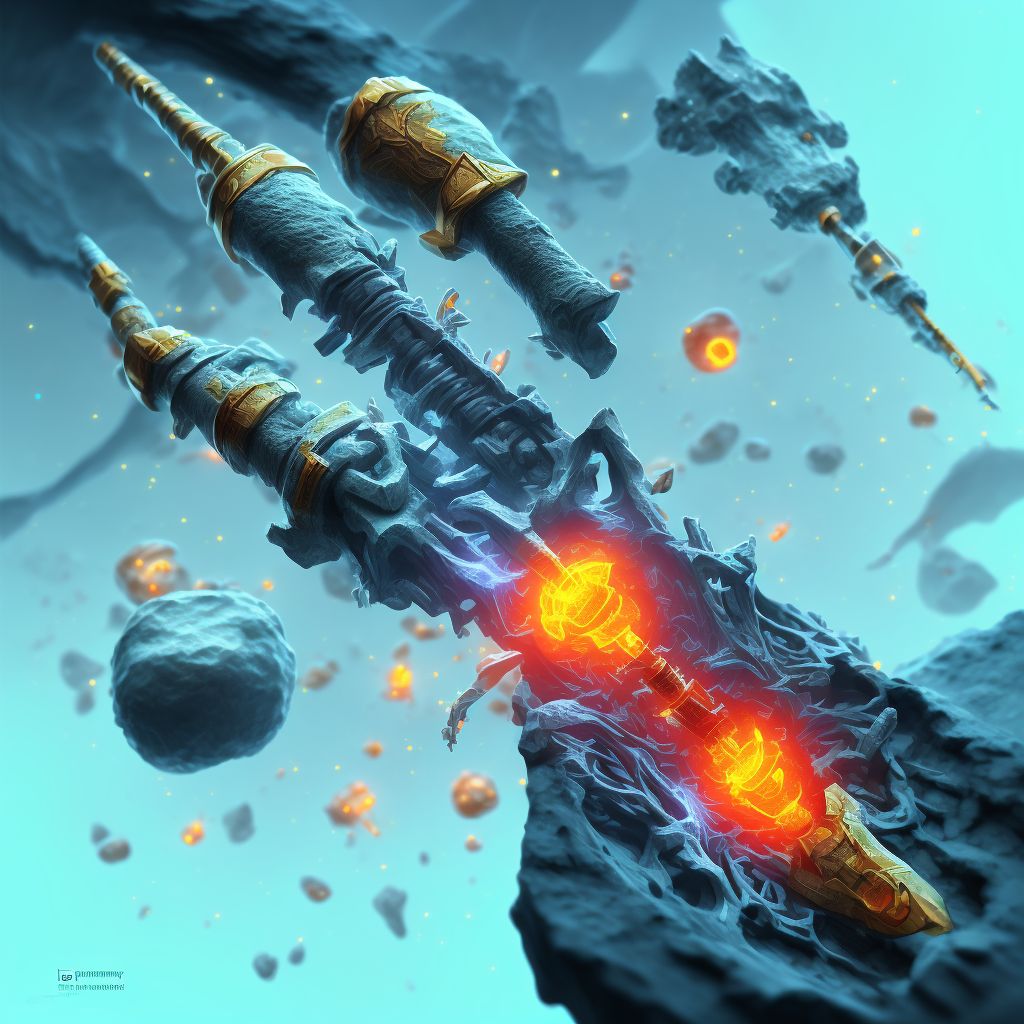
Displaced comminuted fracture of shaft of left tibia, sequela Save
ICD-10 code: S82.252S
Disease category: S82.252: Displaced comminuted fracture of shaft of left tibia
Displaced Comminuted Fracture of Shaft of Left Tibia, Sequela: Understanding the Condition
A displaced comminuted fracture of the shaft of the left tibia is a severe injury that can lead to long-term consequences. It occurs when the tibia bone in the lower leg breaks into multiple fragments and becomes misaligned. This article aims to shed light on this condition, its causes, symptoms, and potential complications.
Causes of a displaced comminuted fracture of the shaft of the left tibia can vary, but they are often the result of high-energy trauma, such as a car accident, sports injury, or a fall from a significant height. The force exerted on the tibia bone causes it to break into multiple pieces, making it challenging for the bone to heal naturally.
The symptoms of this condition can be quite debilitating. Individuals with a displaced comminuted fracture may experience severe pain, swelling, and bruising around the affected area. They may also have difficulty walking or bearing weight on the injured leg. In some cases, the bone fragments may protrude through the skin, leading to an open fracture, which poses a risk of infection.
Complications associated with a displaced comminuted fracture of the shaft of the left tibia can be significant. One of the most common complications is a limb length discrepancy, where the affected leg may be shorter than the other. This can result in gait abnormalities and potential chronic pain in the hip, knee, or ankle joints. Additionally, nerve or blood vessel damage can occur, leading to sensory or circulation problems in the affected leg.
- Limb length discrepancy
- Gait abnormalities
- Chronic pain in the hip, knee, or ankle joints
- Nerve or blood vessel damage
- Sensory or circulation problems in the affected leg
It is essential to seek prompt medical attention if you suspect a displaced comminuted fracture of the shaft of your left tibia. A healthcare professional will conduct a thorough examination, which may include imaging tests like X-rays or CT scans to assess the severity of the injury. Treatment options can vary based on the specifics of the fracture and may involve surgery, immobilization with a cast or brace, and physical therapy.
In conclusion, a displaced comminuted fracture of the shaft of the left tibia is a severe injury that can have long-term consequences. It is crucial to understand the causes, symptoms, and potential complications associated with this condition. If you suspect you have sustained such an injury, seek immediate medical attention for an accurate diagnosis and appropriate treatment.
Treatment of Displaced comminuted fracture of shaft of left tibia, sequela:
Treatment Options for Displaced Comminuted Fracture of Shaft of Left Tibia, Sequela
When it comes to a displaced comminuted fracture of the shaft of the left tibia, sequela, it is crucial to understand the available treatment options. This type of fracture involves a broken tibia bone in the lower leg that is displaced and fragmented. The sequela indicates that it is a long-term co...
To see full information about treatment please Sign up or Log in